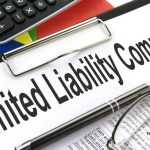In today’s fast-paced and unpredictable business landscape, economic uncertainty has become a constant challenge for executives and leaders. It is during such times that true leadership resilience comes to the forefront. In this article, we explore the significance of leadership resilience in times of economic uncertainty and provide valuable insights for executives seeking to navigate through these turbulent waters.
Understanding Leadership Resilience
Leadership resilience refers to the ability of executives to adapt, persevere, and bounce back from setbacks and challenges during times of economic uncertainty. It encompasses emotional strength, decision-making capacity, and the ability to inspire and guide teams amidst adversity.
Embracing Ambiguity and Change
One key aspect of leadership resilience is the ability to embrace ambiguity and change. In times of economic uncertainty, circumstances can change rapidly, and leaders must be adept at embracing ambiguity and adapting their strategies accordingly.
Executives who are resilient in the face of uncertainty have a growth mindset, viewing challenges as opportunities for learning and improvement. They remain flexible and open to new ideas and are willing to make difficult decisions to steer their organizations towards success.
Effective Communication and Transparency
During times of economic uncertainty, effective communication becomes more important than ever. Executives must maintain transparency and provide clear and consistent communication to their teams.
Transparent communication helps alleviate fear and uncertainty among employees, instilling confidence and trust in the leader’s abilities. It is essential for leaders to articulate the challenges faced by the organization and outline a clear plan of action, ensuring that employees understand the direction and remain motivated.
Building a Resilient Team
Leadership resilience extends beyond the individual leader; it also encompasses building a resilient team. Executives must focus on developing a culture of resilience within their organizations, nurturing employees’ ability to adapt and persevere through difficult times.
This can be achieved by fostering a supportive and inclusive work environment, encouraging innovation and creativity, and providing opportunities for professional development and growth. Additionally, leaders should empower their teams by involving them in decision-making processes and encouraging open and honest communication.
Strategic Thinking and Agility
Leadership resilience in times of economic uncertainty requires strategic thinking and agility. Executives must possess the ability to analyze and accurately assess the rapidly changing business landscape, enabling them to identify potential risks and opportunities.
By adopting a proactive approach, leaders can anticipate market shifts, develop contingency plans, and make informed decisions to mitigate risks and capitalize on emerging trends. Agility in decision-making enables leaders to respond quickly and flexibly to changing circumstances, ensuring the long-term viability and growth of the organization.
Leadership resilience is instrumental in navigating the complexities of economic uncertainty. Executives who embody resilience and demonstrate the ability to adapt, communicate effectively, build resilient teams, and think strategically will be better positioned to steer their organizations towards success, even in the face of adversity.
By embracing the insights provided in this article, executives can develop and strengthen their leadership resilience, equipping themselves to weather economic uncertainties and emerge stronger in the process.
*Note: This article is a fictional representation and serves as an example of how to write an article focusing on the keyword “Leadership Resilience in Times of Economic Uncertainty: Insights for Executives.”










